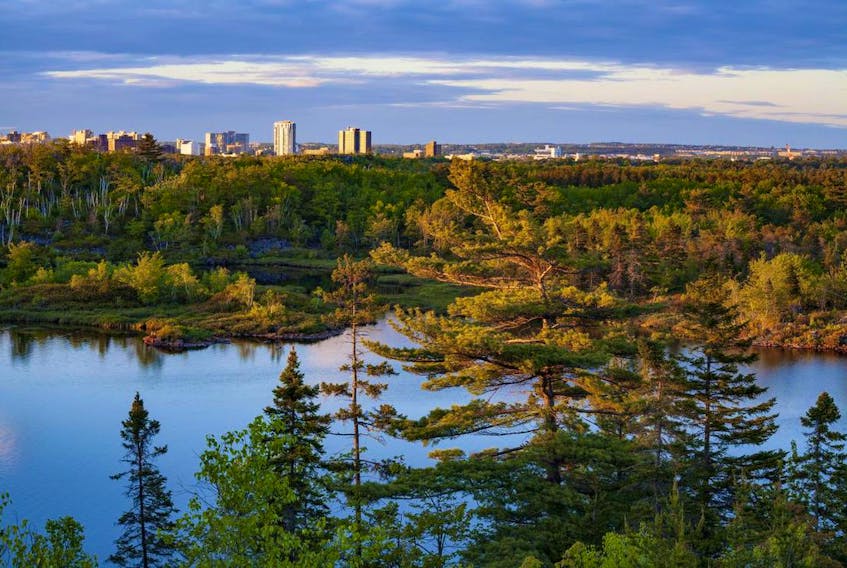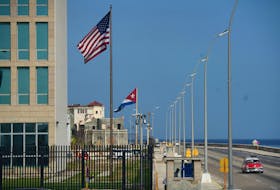Nova Scotia sets the bar low when it comes to protecting the natural environment and, in time, the province will drag itself over that bar.
The goal is to protect 13 per cent of the province’s land from pillage, pollution and human exploitation. That’s a target better suited to 1992 than 2020, but what the heck, why be timely and tenacious when people seem willing to settle for late and lethargic?
The 1992 date wasn’t pulled out of thin air. That was the year of the landmark Rio Earth Summit, where Canada and a bunch of other countries agreed to protect 12 per cent of their land against the ravages of man and to get it done by the year 2000. The 12 per cent target, however, was pretty much pulled out of thin air.
In 2007, the Rio target found its way into Nova Scotia’s Environmental Goals and Sustainable Prosperity Act, which recognized that governments move at a leisurely pace, so 2015 was established as the year to reach the 12 per cent goal.
The good news is we made it, barely. Late in 2015, the province hit the 12 per cent mark, but by then Nova Scotian legislators had raised the bar a notch.
In 2013, all parties in the legislature supported increasing the target by a painfully shy one percentage point, to the current 13 per cent.
Once the six sites now undergoing the process that should end in their protection are added, Nova Scotia will have protected 12.75 per cent of its land for nature. As the preceding data dump indicates, over the past five years the province has made limited progress.
In the meantime, the rest of the world moved on, if not in substance at least in ambition.
In 2011, a new global target was set, this time aided by scientists who pointed out that homo sapiens are destroying the planet’s flora and fauna at an alarming rate, and in the process destroying the very life-sustaining systems that the destroyers depend on to keep from joining the destroyed.
Natural world at risk
Meeting in Japan, world leaders adopted the “Aichi Biodiversity Targets,” which, among other things, set a 17 per cent target for terrestrial protection, to be achieved by 2020. The world’s not there yet, but is well past 13 per cent, suggesting that setting ambitious targets and falling short is better than taking the low and slow road to mediocrity.
Later this year – pandemics permitting – the world will meet in Beijing to ponder the scientifically Huverified news that tens of thousands of species are at high risk of extinction; that humans are destroying the natural world at a rate that far exceeds its ability to renew itself and, as a result, nature’s ability to contribute food and fresh water to a growing human population is compromised, world-wide.
The world’s leading conservation organizations, including Conservation International, the National Geographic Society, the Natural Resources Defense Council, and the Nature Conservancy, are calling for 30 per cent of the planet to be protected for nature by 2030.
During last fall’s election campaign, Prime Minister Justin Trudeau committed his government to the 30 per cent by 2030 target.
But, Nova Scotia’s Liberal government has shown no indication it intends to pursue anything beyond the 13 per cent target.
The 2013 parks and protected areas plan committed the province to 201 provincial parks, 205 new or expanded protected areas, 74 new or expanded wilderness areas, and 128 new or expanded nature reserves. That plan arrived under an NDP government.
The Environment Department reports that today there are 104 legally designated provincial parks, 74 wilderness areas (up from 40 when the plan was released), and 92 nature reserves (up from 22 when the plan was released).
All of this is to say that when Nova Scotia eventually achieves its 13 per cent target, keep the champagne corked. We’ll still have a long way to go before we’re anywhere close to doing our part to preserve nature at levels scientists are telling us are required, not just to sustain nature, but to sustain humanity.
Clarification: In a recent column about institutional racism in Nova Scotia, I inadvertently, and unfairly, singled out the Serious Incident Response Team (SIRT). All available evidence supports the view that SIRT conducts itself impartially and equitably.
Jim Vibert, a journalist and writer for longer than he cares to admit, consulted or worked for five Nova Scotia governments. He now keeps a close and critical eye on those in power.









